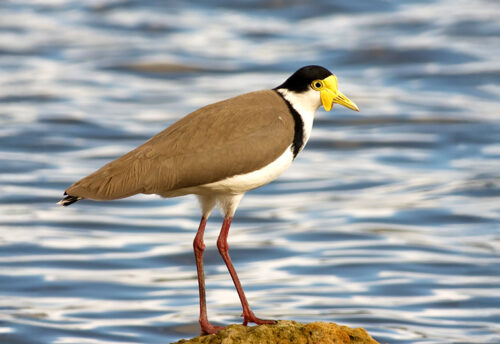
With over 400 known species of sharks worldwide, one of the more interesting is the spotted wobbegong shark. These sedentary, lazy sharks are known for their shaggy appendages, their quick reflexes when snagging a prey item, and their cool coloration. They are hunted for their tasty meat and for their skins as clothing and accessories. Even though these sharks have few predators, sans when they are very young pups, they are predated by humans. These sharks are not a species in danger of going extinct though….. yet.
First the Stats…
Scientific name: Orectolobus maculatus
Weight: Up to 850 pounds
Length: Up to 71 inches
Lifespan: Unknown
Now on to the Facts!
1.) There are 12 known species of wobbegongs.
2.) Wobbegong sharks are nocturnal (active at night).
3.) The name wobbegong comes from the Aborigine name meaning “shaggy beard”. They are also called carpet sharks.
4.) They are not obligate ram ventilators (sharks that have to force water through their mouths and over their gills in order to breathe). They simply lay on the ocean floor, lazily, and open their mouths, sucking water in and over their gills. So they don’t have to keep swimming in order to breathe.
5.) These sharks are ambush predators. They lay in wait for passing prey to happen upon their tassels thinking they are food. Then the typically lazy wobbegong opens their mouth, creating a vacuum and sucking in the prey whole. They snap up their prey in the blink of an eye.
But wait, there’s more on the wobbegong!
6.) Wobbegong sharks can actually move across the ocean floor using their bottom fins, which looks just like they are walking.
7.) Their jaws are powerful and they also have very sharp teeth, albeit small, that can cut through wetsuit material, yielding a painful bite.
Did you know…?
Wobbegongs can open their mouths wide enough to take in prey nearly as large as themselves!
8.) Wobbegong sharks are ovoviviparous (the young develop in eggs inside the mother’s body, nourished by the egg yolk and not by the food the mother eats. After they hatch, they continue to develop inside the mother’s body — for a total gestation period of 10 to 11 months — and then are born as live young, called pups.
Now a Short Wobbegong Video!
Also, check out the Critter Science YouTube channel. Videos added frequently!
Want to suggest a critter for me to write about? Let me know here.



